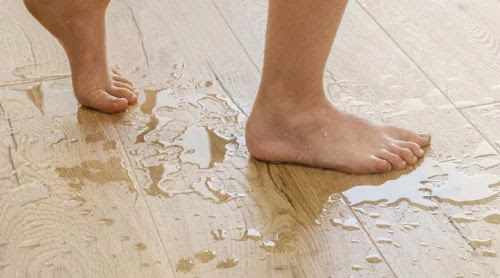
As homeowners and designers seek durable and low-maintenance flooring options, SPC (Stone Plastic Composite) flooring has emerged as a popular choice. However, concerns about slipperiness often arise when considering SPC flooring for residential or commercial spaces. In this article, we'll explore the truth behind the perception of SPC flooring being slippery and provide insights into its slip-resistant properties.

1. Understanding SPC Flooring:
SPC flooring is engineered with a stone-plastic composite core, offering exceptional durability, water resistance, and dimensional stability. It typically features a wear layer with embossed textures that mimic the look and feel of natural materials such as wood or stone. Despite its smooth surface, SPC flooring is designed to provide traction and reduce the risk of slips and falls.
2. Slip-Resistant Properties:
Contrary to popular belief, SPC flooring is not inherently slippery. In fact, many manufacturers incorporate slip-resistant features into their SPC flooring products to enhance safety and stability. These features may include:
Embossed Textures: The wear layer of SPC flooring often features embossed textures that provide additional traction underfoot. These textures mimic the natural grain or patterns found in wood or stone, enhancing the grip and reducing the risk of slipping.
Surface Coatings: Some SPC flooring products are coated with specialized surface treatments that improve slip resistance. These coatings may contain additives or modifiers that enhance traction without compromising the aesthetic appeal of the flooring.
Underlayment Options: Installing SPC flooring over a high-quality underlayment can further enhance its slip-resistant properties. Certain underlayment materials, such as cork or rubber, offer cushioning and grip, reducing the likelihood of slips and falls.
3. Safety Standards and Certifications:
SPC flooring is subject to various safety standards and certifications to ensure compliance with slip resistance requirements. Manufacturers may conduct slip resistance tests in accordance with industry standards such as the ASTM International or the European Norm (EN) standards. Products that meet or exceed these standards are deemed safe for use in residential and commercial settings.
4. Maintenance and Care:
Proper maintenance and care can also play a significant role in reducing slipperiness and maintaining traction on SPC flooring. Here are some tips:
Regular Cleaning: Sweep, vacuum, or mop the floor regularly to remove dirt, dust, and debris that can reduce traction.
Avoid Wet Surfaces: Wipe up spills promptly to prevent water accumulation, which can make the floor slippery.
Use Non-Slip Rugs: Place non-slip rugs or mats in areas prone to moisture, such as entryways or kitchens, to provide additional traction.
Conclusion:
In conclusion, SPC flooring is not inherently slippery and can be an excellent choice for residential and commercial spaces where safety is a priority. With its durable construction, slip-resistant features, and adherence to safety standards, SPC flooring offers a reliable and stylish flooring solution for any environment. By understanding its slip-resistant properties and implementing proper maintenance practices, you can enjoy the benefits of SPC flooring without worrying about slipperiness.
Previous: Does SPC Flooring Crack?